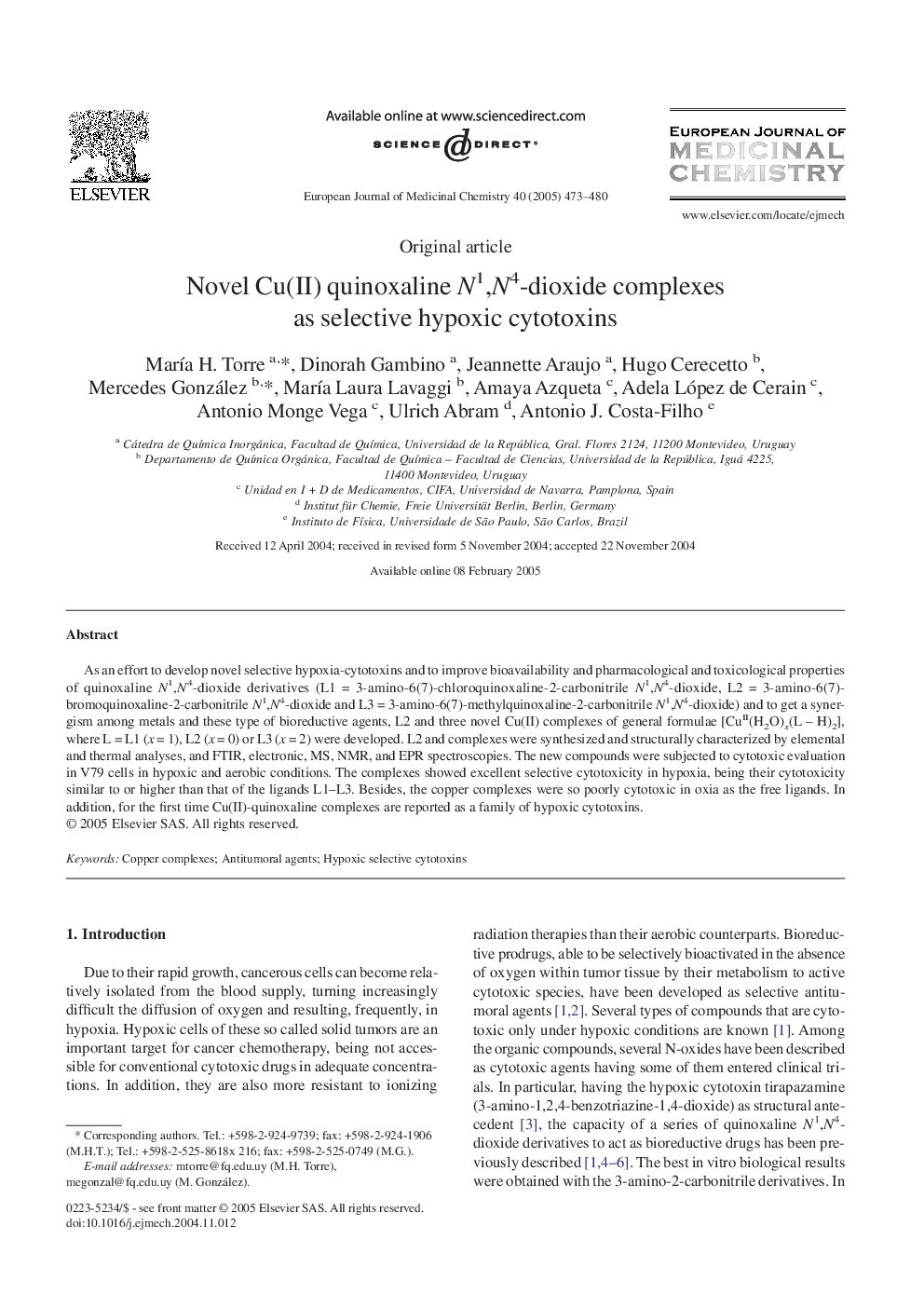| Article ID | Journal | Published Year | Pages | File Type |
|---|---|---|---|---|
| 9769277 | European Journal of Medicinal Chemistry | 2005 | 8 Pages |
Abstract
As an effort to develop novel selective hypoxia-cytotoxins and to improve bioavailability and pharmacological and toxicological properties of quinoxaline N1,N4-dioxide derivatives (L1 = 3-amino-6(7)-chloroquinoxaline-2-carbonitrile N1,N4-dioxide, L2 = 3-amino-6(7)-bromoquinoxaline-2-carbonitrile N1,N4-dioxide and L3 = 3-amino-6(7)-methylquinoxaline-2-carbonitrile N1,N4-dioxide) and to get a synergism among metals and these type of bioreductive agents, L2 and three novel Cu(II) complexes of general formulae [CuII(H2O)x(L - H)2], where L = L1 (x = 1), L2 (x = 0) or L3 (x = 2) were developed. L2 and complexes were synthesized and structurally characterized by elemental and thermal analyses, and FTIR, electronic, MS, NMR, and EPR spectroscopies. The new compounds were subjected to cytotoxic evaluation in V79 cells in hypoxic and aerobic conditions. The complexes showed excellent selective cytotoxicity in hypoxia, being their cytotoxicity similar to or higher than that of the ligands L1-L3. Besides, the copper complexes were so poorly cytotoxic in oxia as the free ligands. In addition, for the first time Cu(II)-quinoxaline complexes are reported as a family of hypoxic cytotoxins.
Keywords
Related Topics
Physical Sciences and Engineering
Chemistry
Organic Chemistry
Authors
MarÃa H. Torre, Dinorah Gambino, Jeannette Araujo, Hugo Cerecetto, Mercedes González, MarÃa Laura Lavaggi, Amaya Azqueta, Adela López de Cerain, Antonio Monge Vega, Ulrich Abram, Antonio J. Costa-Filho,
